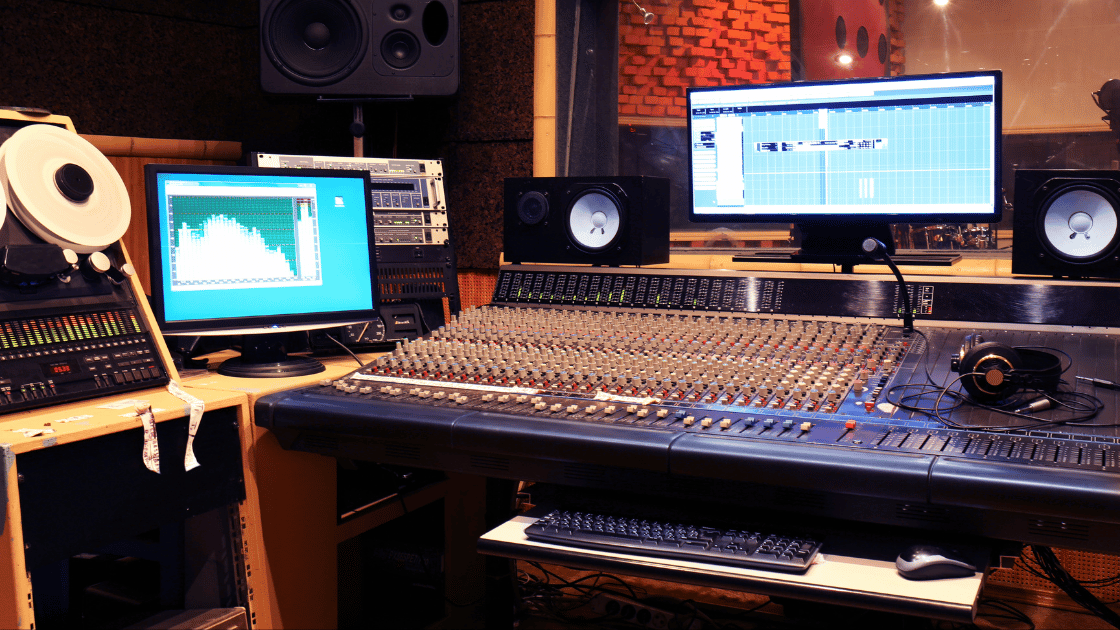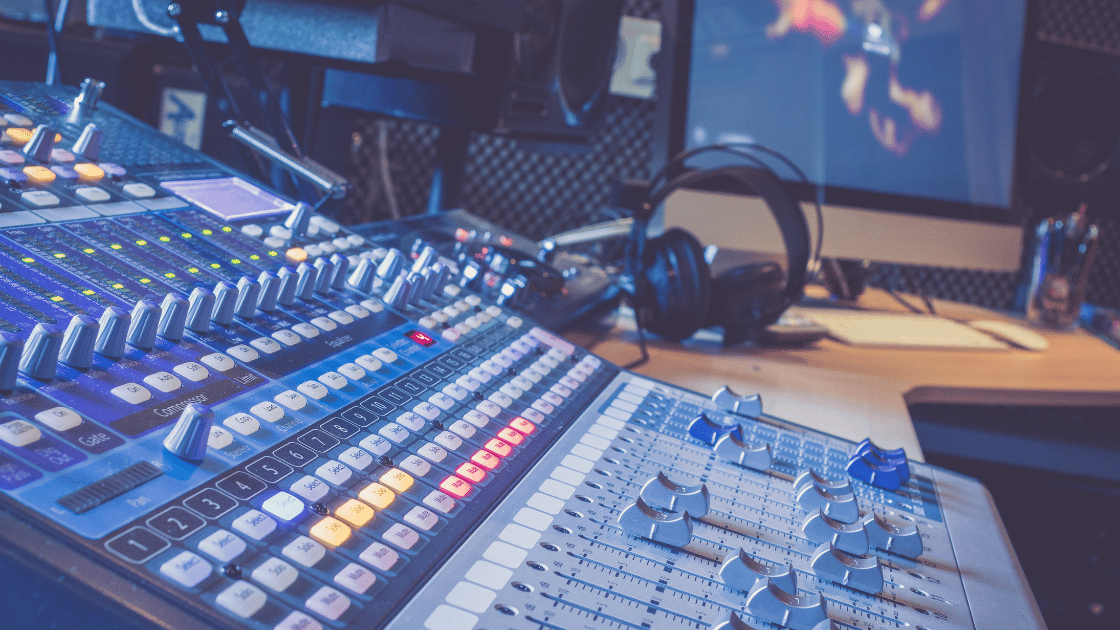Audio Engineering for Noobs: A Beginner's Guide to Sonic Mastery

Learning audio engineering is a journey that opens the door to a world where science and art overlap. At its core, audio engineering is the skillful art of shaping sound, capturing the soul of the music, and presenting sonic magic to the ears of listeners. In this comprehensive guide tailored for beginners, we go deep into the essence of audio engineering, demystifying its principles and providing a roadmap for those ready to embrace this art of sonic manipulation.
Studio Setup: Building Your Sonic Playground
Every aspiring audio engineer needs a meticulously curated sonic playground, and it all begins with the right studio setup. This section serves as your blueprint, guiding you through crucial decisions such as selecting the ideal DAW (Digital Audio Workstation), choosing the perfect audio interface to suit your needs, and understanding the nuances of various microphones. Building your studio foundation is the first step toward unleashing your creative potential.
-
Choosing the Ideal DAW (Digital Audio Workstation): Selecting the right DAW is the foundational step in your music production journey. Consider your workflow, preferences, and budget. For versatility, Ableton Live; for industry standards, Pro Tools; for user-friendly experience, FL Studio. Experiment with trials to find the one that harmonizes with your creative process.
-
Finding the Perfect Audio Interface: Your audio interface is the gateway to your sonic quality. Factors like connectivity, inputs/outputs, and preamps matter. Focusrite Scarlett series for budget-friendly quality, Universal Audio Apollo for premium sound, and PreSonus AudioBox for a balanced option. Assess your needs and let your interface be the conduit for your musical expression.
-
Understanding the Nuances of Various Microphones: Microphones are the ears of your studio, each with its unique color and character. For vocals, Shure SM7B for warmth, AKG C414 for versatility; for instruments, Shure SM57 for durability, Neumann U87 for studio excellence. Know the polar patterns and frequency responses to match the microphone to your sound source. Your mic choice shapes your sonic identity.
 ⭐️ Check out my FREE Music Production courses and guides ⭐️
⭐️ Check out my FREE Music Production courses and guides ⭐️
Sound Theory: The ABCs of Sonic Physics
Before immersing ourselves in the practical aspects, it's imperative to grasp the fundamental principles that govern sound and vibration. Journey into the theoretical realm of sound theory, where we explore the anatomy of sound waves, unravel the mysteries of polarity, navigate the dance of phase relationships, and gain a solid understanding of the decibel (dB) scale. Armed with this knowledge, you'll navigate the sonic landscape with confidence and clarity.
Recording: Capturing the Sonic Story
With your audio foundation in place, it's now time to look into the exciting world of recording. Follow the signal flow from source to destination, demystify the intricacies of DAW recording, and master the art of tracking different musical elements. This section acts as your guide to creating pristine recordings, capturing the nuances and emotions that define each musical moment.
- Signal Flow: Tracing the Sonic Journey Begin your sonic exploration by understanding signal flow and gain staging. Picture it as an electrical voltage map, guiding audio signals from the source to the destination. For a microphone capturing vocals or a synthesizer generating electronic sounds, simply follow the path the signal travels. Mastering signal flow and gain staging is like conducting a symphony of voltage, making sure that every element is at its maximum efficiency.
-
Demystifying DAWs: Your Digital Canvas Your Digital Audio Workstation is the canvas where sonic paintings come to life. Demystify the intricacies – set up tracks, arm for recording, and capture the essence of your musical moments. Then edit and mix your audio tracks to perfection. Embrace the flexibility of digital recording and let your creativity flow seamlessly.
-
The Art of Tracking: Capturing Musical Lightning in a Bottle Tracking is the art of capturing individual musical elements. Whether it's a guitarist strumming chords, a drummer laying down beats, or a vocalist performing into a microphone, tracking is where the magic happens. Master the techniques of tracking – set levels, fine-tune inputs, and create a sonic movie that captures the essence of your musical vision.

⭐️ Download my FREE Home Studio Setup Guide ⭐️
Editing: Crafting Sonic Perfection
Sound quality is a pursuit, and in the world of audio engineering, it often involves the fine art of audio editing. Discover the tools and techniques that transform raw recordings into polished gems. From addressing unwanted noise, pops, and clicks to tackling timing issues and tuning discrepancies, this section is your handbook for achieving sonic perfection with finesse and precision.
Mixing & Mastering: The Sonic Finishing Touch
As we approach the grand finale of your audio engineering journey, the focus shifts to the critical stages of mixing and mastering. Here, we balance tracks, apply signal processing, and navigate the final steps of exporting the audio. This section serves as your compass in the often-intimidating world of turning a collection of tracks into a harmonious sonic masterpiece that stands tall in the auditory realm.
-
Balancing Tracks: Building Your Harmonious Soundscape Start your sonic masterpiece by balancing tracks. Picture it as arranging a musical ensemble, where each instrument finds its perfect place. Adjust volume levels, pan instruments to create spatial depth, and make sure every element contributes to the overall sonic harmony. Balancing tracks lays the foundation for a mix that resonates with clarity and cohesion.
-
Signal Processing: Sculpting Sonic Brilliance This is the world of EQ, compression, reverb, and other effects to enhance each track. EQ shapes the frequency spectrum, compression controls dynamics, and effects add depth and atmosphere. Experiment with different processing techniques to create a mix that captivates the listener and elevates your sonic vision.
-
Exporting the Audio: Your Sonic Masterpiece Takes Flight The final step in your sonic journey is exporting the audio. Think of it as immortalizing your creation. Set the parameters for your export – choose the file format, bit depth, and sample rate. Consider exporting stems for flexibility in future edits. Check that your mix translates well to different playback systems. With the click of a button, your sonic creation takes flight, ready to be shared with the world.
 ⭐️ Download my FREE Magic EQ Settings Guide ⭐️
⭐️ Download my FREE Magic EQ Settings Guide ⭐️
Conclusion: Your Sonic Odyssey Begins
With a profound understanding of audio engineering principles, a carefully curated home music studio, and newfound expertise in sound theory, recording, editing, and mixing/mastering, you stand at the threshold of your sonic odyssey. Bookmark this guide as your companion in unraveling the world of audio engineering, empowering you to shape soundscapes and bring your musical visions to life. Welcome to the enchanting world of sonic wizardry, where every knob turn, every edit, and every mix becomes a brushstroke in the canvas of your auditory masterpiece.
#audioengineer #audioengineering #musicproduction #beatmaker #singersongwriter #singersongwriterproducer #musician #songwriter #musicianproducer #songwriterproducer #beatmakerproducer #homestudio #recordingengineer #recordingschool
Would you like to learn audio engineering and music production?
Hey 👋 I'm Futch. I've been teaching music production for almost 30 years, I'm an Ableton Certified Trainer and music production coach. I offer free and paid online music production courses & resources, online group Zoom classes, and online 1:1 Zoom training for Ableton Live, audio engineering, and music production. If you are a beginner, intermediate music producer, musician, singer, songwriter, or beatmaker I can help you learn music production skills quickly and easily so you can become a Music Production Ninja.
⭐️ Book a FREE 15-minute discovery meeting with me right now. ⭐️
Futch - Music Production Coach and Ableton Certified Trainer
Check out my live online music production program: Music Production Ninja...

 ⭐️ Try my
⭐️ Try my 





